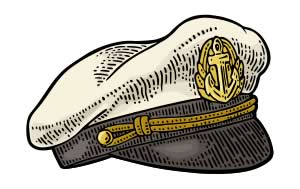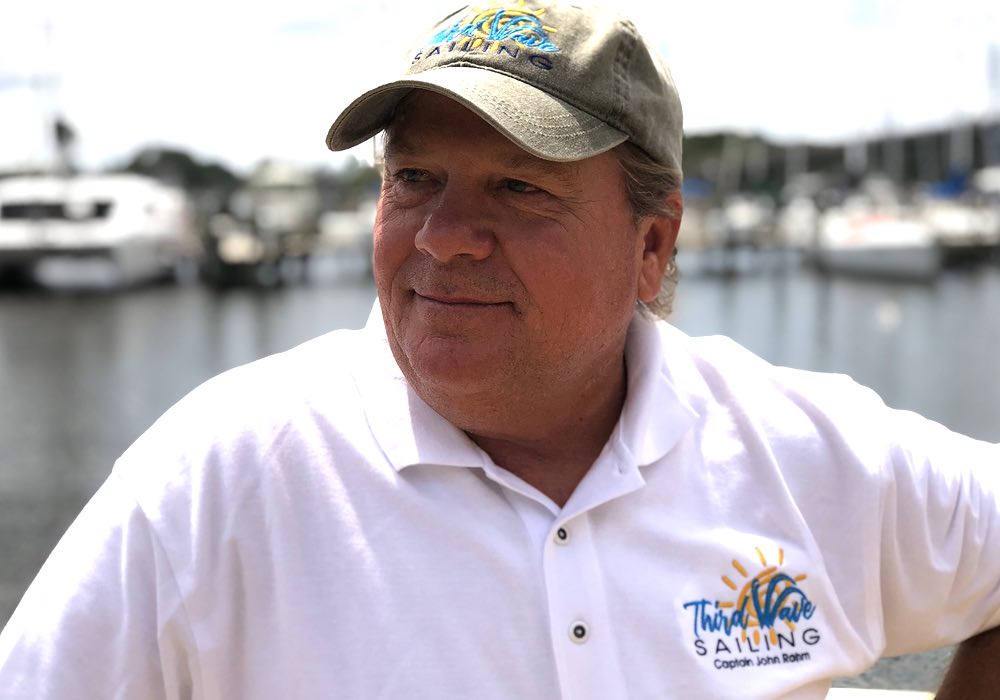It's Wednesday December 17, 2025

January 2021
New Year resolutions come in two flavors: things planned and things avoided. Studies indicate that 34% of New Year resolutions are broken in the first month of January. After 6 months only 46% of resolution makers have been successful. Studies also say the top resolution is better financial management, followed closely by healthier eating. Millennials are best at keeping their resolutions (yet another reason to dislike them). All disappointing and true.So, to improve humanity’s track record here in Oriental, I offer (via rant) these helpful and easy resolutions to improve your boating lifestyle.
Don’t tie stopper knots on the ends of fender lines. Stopper knots make it difficult to quickly tie/untie the fenders.“Hey Julie, we’re not a starboard side tie anymore. We’re backing in. Please move all the (very heavy) fenders (the four on starboard you just hung) to the port side (and hurry) (and don’t complain) (too much) (please).”
Don’t use fancy fender hangers. They’re embarrassing. You’re telling everyone you can’t tie a decent knot. Throw your fender hangers in the nearest trash can. Learn to tie a round turn and two half hitch knot (in your sleep).
“Hey John, these fender hangers are a useless pain. I can’t move them around the stanchions. Who bought these?” (I can’t believe you bought these.) “Were they a gift?” (Can we get our money back?) “I think these have been re-gifted to us.” (Maybe we can pass these off to someone else?)
Don’t thread the halyard bitter end through the hole in the mast cleat and then tie a stopper knot. Yes, the thought of skying the halyard is frightening. But, a stopper knot through any cleat is untidy. Just be attentive and careful. Don’t sky the halyard. “Hey John, I’m having trouble with the cleat hitch because the halyard is threaded through the hole in the cleat.”
Speaking of cleats. Learning a proper cleat hitch is a good resolution. Nobody wants a wad of twisted over and unders on a cleat. I have great empathy for the local dock masters. They are constantly re-tying boat owner cleat hitches.
But what is a proper cleat hitch? Some sailing instructors take a full wrap on the cleat before coming up and under the horns (you know who you are). While this may be okay, it is not the technique prescribed by the American Sailing Association. I always (usually) default/adhere to the standards published by the experts. “Hey John, double check my hitch on the mainsail outhaul cleat. It’s upside down under the boom and I’m not sure I did it right.”
Don’t use old halyards and sheets for dock lines. Yes, they are strong and still useable. But their repurposing is embarrassing. The billboard reads: ‘You can afford the boat but not the dock lines’.
More importantly, halyards do not stretch and absorb shock like a proper dock line. Do some research on sizing and see Ben at West Marine or Pat at the Provision Company for new nylon lines. New lines are also a good opportunity to learn splicing. “Hey John, why is this line so nasty?” (Please get new lines.)
And… learn how to whip a line. Too-long sheets/lines is a symptom of not knowing how to whip a line. Properly size your lines, sheets and halyards (cut them) and whip the ends. Measure twice (three times) and cut once. “John, why (the heck) is the line for the vang so long?”
Be reluctant to hang a fender in the horizontal. To keep a horizontal fender aligned with a piling, the boat must not move fore or aft (too much). Use a fender board. “Hey John, is that fender going to stay there?” (No probably not. Let me get the fender board and another fender from the lazeratte.)
Wash your boat. Yes. Boats must be washed. Or, hire it done. “This boat is nasty. Look at all this green crud. What is that?” (What have you been doing on the boat all this time?)
Speaking of time on the boat – use your boat.
Military pilots are bound to a training syllabus. They are constantly working their way through a training curriculum. Accomplish a flight successfully and an aviator gets credit for completion. The more difficult flights expire quickly.
For example, some low altitude flights are only ‘good for two weeks’. To maintain currency, one of these flights must be successfully accomplished every two weeks or the aviator defaults to ‘qualified’ but not ‘current’.
To reestablish lapsed currency, often a simulator and a flight with an instructor pilot is required. Currency is meticulously tracked by the squadron operations department. Pilot currency is fed into combat capability and readiness. Higher headquarters is greatly interested in those metrics. Higher headquarters at your house (non-helmsperson spouse) is greatly concerned about your proficiency. Like aviation proficiency, boating proficiency erodes.
So use your boat. A lot. Keep a log. “John, we haven’t used our boat in like, forever.”
Practice the hard stuff. Collect some self discipline and do some planned training. If you are uncomfortable docking, carve out some time and make yourself(ves) practice.
How about crew overboard? During these stressful boating events, we never rise to the occasion; we sink to the level of our practice. If you haven’t practiced, ‘it’ will not go well. “John is really good at crew overboard. He has done hundreds and hundreds. So if I go overboard and he doesn’t rescue me, tell Sheriff Chris there has been foul play.”
And lastly on a personal note, my new year’s resolution is to curb my use of semicolons and parenthesis. Sadly, I am not optimistic about the outcome. Have the best New Year with your boat.
Fair Winds,
Captain John Rahm
 Captain's Blog on TownDock.net is all about making your time on the water enjoyable. Captain John Rahm teaches sailing and boat handling at Third Wave Sailing. Captain's Blog on TownDock.net is all about making your time on the water enjoyable. Captain John Rahm teaches sailing and boat handling at Third Wave Sailing. |
